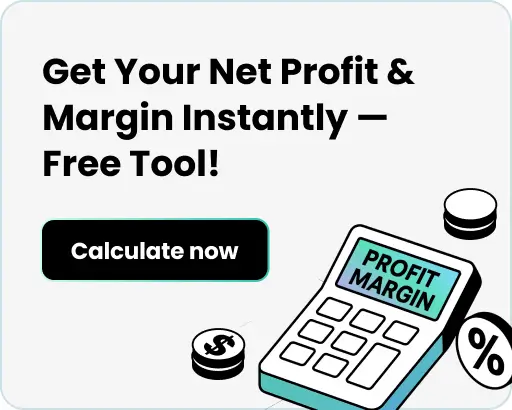What is the Average CPM? (Formula + Good Benchmark)

CPM is one of the most common pricing models in digital advertising. It’s widely used on platforms like Facebook, Instagram, TikTok, YouTube, and Google Display Network because it helps advertisers measure how efficiently their budget is buying visibility.
This article breaks it all down, from CPM definition and formula to the latest averages and best practices. By the end, you’ll know how to measure your CPM performance, compare it against benchmarks, and spot whether your ads are costing too much.
What is CPM?
CPM stands for “Cost per Mille,” where mille means 1,000 in Latin. It refers to the cost advertisers pay for 1,000 impressions of one single ad.
The formula is straightforward:
For example, if advertisers spent $500 on a campaign and got 100,000 impressions, then CPM = (500 ÷ 100,000) × 1,000 = $5, meaning that advertisers are paying $5 for every 1,000 impressions of their ad.
Advertisers use CPM as a standardized way to compare ad costs across different channels and audiences. For example, if they want to reach as many people as possible for brand awareness, CPM is often the most important metric.
What is the Average CPM by Ads Platforms?
According to Gupta Media Social, CPM averages can vary widely depending on social platforms.
These are CPM averages of 5 major platforms in advertising:
Platform | 2025 Average CPM |
|---|---|
Meta (Facebook & Instagram) | $8.15 |
TikTok | $2.97 |
YouTube | $2.16 |
Snapchat | $6.43 |
$6.03 |
Source: Gupta Media Social CPM Tracker, 2025.
At $8.15, Meta remains the priciest among the platforms—though justified by its reach, targeting precision, and performance tools.
In February 2025, average TikTok CPM reached $2.97 and $2.16 on YouTube. With CPMs well below Meta’s, TikTok and YouTube stand out as highly cost-efficient.
Both platforms offer advertiser-friendly CPMs ($6–$6.5), with Snapchat emphasizing interactive experiences and Pinterest catering to niche-enthusiast audiences.
What is Considered as Good CPM?
A good CPM is contextual — the key is not to look at CPM in isolation but always connect it with metrics like CTR (click-through rate), CPC (cost per click), and conversion rate (CR). They all work together to prove ad effectiveness.
As a rule of thumb, if the CTR is above 1% and the CPC is under $1, then CPM is likely in a healthy range, even if it’s not the absolute lowest.
For example, on Meta platforms, a CPM between $5–$10 is generally considered good. Anything below that is a bonus, but slightly higher CPMs can still be profitable if your ads are driving strong engagement and conversions.
What is Considered as Bad CPM?
A bad CPM is when it’s 2x-3x higher than industry averages without seeing healthy conversion in return. In that case, CPM signals inefficient ad spend and it eats away ads overall performance drastically.
On the flip side, even a “high” CPM can still be good if those impressions convert into clicks and sales at a profitable rate. It all comes down to the balance between CPM, CPC, CTR, and ROI.
Lower CPM for Better Campaign Performance: Best Practices
Controlling CPM is about making sure the ads are being delivered efficiently to the right audience, with the right creatives, and for the right campaign objective.
Here are the best practices that consistently help reduce CPM while improving overall performance:
1. Let Campaigns Gather Enough Data
Don’t pause ads randomly or judge performance too early. Running with just a few dollars in spend won’t give you meaningful averages. Allow each campaign at least $100 in spend before evaluating CPM, CPC, or CTR. Early fluctuations are normal, especially when Facebook or TikTok is still learning who to show your ads to.
2. Focus on Quality Scores
Platforms like Meta reward ads with higher quality, engagement, and conversion rankings. Better ad relevance reduces your CPM, since platforms want to show ads that match their users’ interests. If your CPM is unusually high (e.g., $40–$50 per conversion), check your quality scores. Below-average rankings often explain inflated costs.


3. Match Objectives with CPM Expectations
Not all CPMs are equal. Awareness campaigns usually deliver the lowest CPMs (around $3–5), while conversion campaigns can easily average $20–30 or more. Instead of comparing across objectives, measure whether your CPM is efficient for that campaign’s goal.
4. Optimize Creatives and Copy
Two ads with the same targeting can have very different CPMs simply because one creative resonates better. Test variations of copy, images, or video to see which ad earns more engagement. High CTR and strong engagement signal relevance, which platforms reward with lower CPM.


5. Use Breakdowns to Find Inefficiencies
Look deeper into placement, age, gender, and platform breakdowns. Often, certain segments deliver lower CPMs without hurting performance. For example, Stories may outperform Feed, or a broader age range may reduce costs while still converting. Use this data to duplicate and refine ad sets.
6. Use Automated Bidding (Test Carefully)
If your campaign is sold on a fixed CPM or estimated CPM, test automated bidding options like maximizing viewable impressions or duplicating line items with slightly higher bids (20–30%). These small tests help you find the sweet spot without overspending.
7. Remember: CPM Alone Isn’t the End Goal
Finally, CPM should always be viewed alongside CTR, CPC, and CPA/ROAS. A $30 CPM can still be good if it brings high-converting traffic, while a $3 CPM might be useless if engagement and conversions are low.
The key is balance: track CPM as a benchmark, but focus on how it fits into the bigger picture of campaign performance. With this perspective, you’ll not only control ad costs but also make smarter decisions that drive sustainable growth.
Make sure you check out TrueProfit. It’s a net profit analytics platform that tracks all essential ecommerce metrics with the major focus on store profitability. It helps monitor Shopify financial store performance and retailers can spot where’s leaking and where’s high-performing to optimize stores for overall better profit.
Irene Le is the Content Manager at TrueProfit, specializing in crafting insightful, data-driven content to help eCommerce merchants scale profitably. With over 5 years of experience in content creation and growth strategy for the eCommerce industry, she is dedicated to producing high-value, actionable content that empowers merchants to make informed financial decisions.




 Shopify profits
Shopify profits